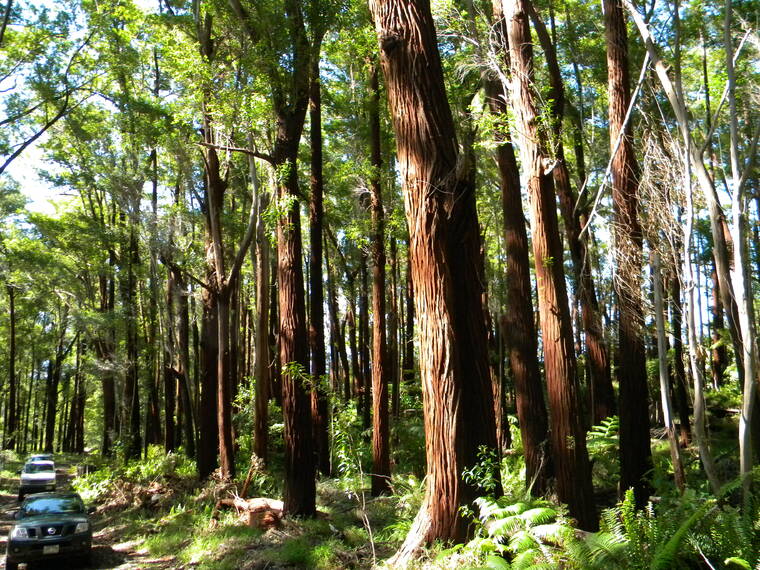A 1,200-acre koa forest in Ka‘u is almost ready to be harvested for the first time in nearly two decades.
The Kapapala Canoe Forest was set aside in 2005 within the Ka‘u Forest Reserve in order to serve as a sustainable source for koa wood to be used to build traditional Hawaiian canoes, because organizations that build said canoes found it harder and harder to source suitable trees amid a decline in koa resources in the state.
Since its establishment, however, no trees have been harvested from the 1,257-acre forest because of a lack of updated information about the area.
In 2019, the state Board of Land and Natural Resources — whose Division of Forestry and Wildlife manages the forest — signed off on an inventory of the forest in order to further understanding about its ecology and, eventually, develop a sustainable management plan to allow for harvesting.
That plan, published in April, estimates that roughly 5.5 million board feet of koa timber exist within the forest, based on data from the inventory. Of those, about 1 million board feet are in trees considered ideal for canoe log construction now, and another 1.5 million likely will be well-suited for log construction in the next two decades.
In order to sustainably harvest wood from the forest, the plan states that trees will only be felled selectively. “High-grading,” or the practice of only harvesting the largest trees, is unsustainable over time. Therefore, any harvests for canoe logs will be accompanied by other noncommercial actions to thin the forest, including selective harvests of noncanoe trees.
Harvests will be largely carried out in priority areas along the roadsides within the forest reserve first, before eventually proceeding deeper into the forest over the next several decades.
Organizations within Hawaii will be able to submit applications to harvest trees from the forest. Applicants must be able to demonstrate they are capable — both financially and technically — of processing a koa log into a canoe and submit their own stewardship plan that outlines any forest conservation or land stewardship activities the group is involved in.
Applications will then be reviewed by a selected board of experts, including cultural practitioners, members of voyaging and racing canoe associations, canoe builders, forestry experts, conservationists and more.
Meanwhile, DOFAW will identify which trees are available for harvest at the time of the application. Harvests will be restricted to only 10% of the total volume of the forest within 10 years, which will therefore limit the number and volume of trees removed annually.
Of those trees identified by DOFAW, qualified applicants will be able to select their preferred tree or trees, and will be given a range of dates during which they will be allowed to enter the forest to remove the wood. Any cost of harvesting and extracting the trees will be borne by the applicant.
In brief statement Thursday, a DLNR spokesperson said via email that there are still no immediate plans to harvest wood from the area, and a future working group meeting will finalize the protocol for allocating logs. Once that protocol is in place, applications from canoe-building groups will be accepted.
When those applications have been reviewed and ranked, then organized harvest operations can begin.
Email Michael Brestovansky at mbrestovansky@hawaiitribune-herald.com.






